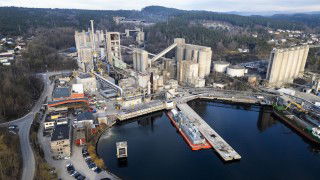How can a cement plant operate more sustainably in ecological and economic terms? As part of its initiative for the green cement plant, thyssenkrupp Industrial Solutions recently launched polysius® fuel substitution. This one-stop solution for alternative fuel rates of up to 100 per cent enables cement producers to save operating expenditure, conserve natural resources, reduce CO2 emissions, become highly flexible in sourcing and maintain product quality. LafargeHolcim’s Lägerdorf plant is an example of how well the concept works in practice. By Leo Fit and Samuel Zühlsdorf, thyssenkrupp Industrial Solutions, Germany.
thyssenkrupp is a long-term technology partner of the cement industry and one of the few international full-liners. Its Industrial Solutions business area is working on technical solutions to make cement production more eco-friendly.
The goal is to develop a completely-sustainable cement plant: the green polysius® cement plant. This includes the development of a series of modules for increased sustainable cement production, with several modules having already reached market maturity. Cement producers all over the world can use them to take a big step towards a greener production facility.
